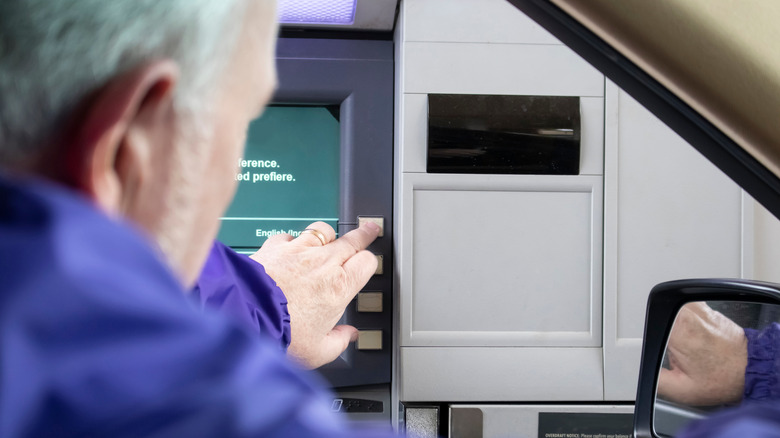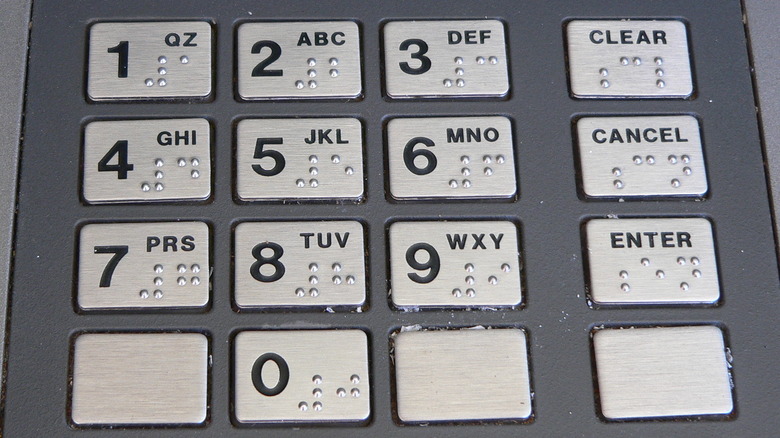The Real Reason Drive-Up ATMs Have Braille Buttons
As you pull your car up to a drive-thru ATM, at first glance it may be a little perplexing to notice that the buttons on the ATM have braille on them. Blind individuals don't drive, so it's easy to jump to the conclusion that the braille doesn't need to be there. But the truth of the matter is, there are legitimate reasons for braille to be present on the buttons at a drive-thru ATM.
In the United States, "The Americans With Disabilities Act" (ADA) prohibits discrimination against individuals with low or impaired vision. As such, ATMs must be accessible to individuals who are blind. One of the ways to comply with those standards is to use braille. Of course just having braille buttons isn't enough as visually impaired individuals still need to see the on-screen prompts. As a result, most ATMs also have verbal cues which allow users to respond to those prompts with the buttons.
Consequences of non-compliance
Companies can suffer severe consequences if they don't comply with ADA standards — not to mention the inconvenience it causes individuals who'd benefit from those adaptive technologies. Wells Fargo bank reached a settlement agreement back in 2011 after receiving numerous complains that the bank chain was discriminating against those who were hard of hearing. But through the course of the government's investigation, they found that there were other ways in which the bank was limiting access to those with disabilities, including those with low vision. Part of the settlement required Wells Fargo to retool its ATMs in order to accommodate the blind.
As part of the settlement, Wells Fargo had to pay a fine of $55,000 on top of the cost required to make all of their ATM machines compliant with the law. The company was also asked to give $1,000,000 in charitable donations to organizations assisting with veterans disabilities resulting from injuries sustained in Afghanistan and Iraq.
Of course that still begs the question — are blind people using drive-up ATMs? And the answer in some circumstances is yes.
How the blind use drive up ATMs
Just because the government requires braille to be available on drive-up ATMs, doesn't mean that the feature is actually utilized. But the truth of the matter is, there are circumstances where it does get used.
Even though individuals with low or no vision are used to seeking help and have people in their lives that they trust to help them with everyday tasks, the blind still have a right to privacy and want that right preserved as much as do sighted individuals.
It's important to consider that there's likely a reason for the law requiring braille on drive-up ATM machines to exist. And it has to do with the fact that blind people find the requirements to be useful to them. As Mental Floss notes, if a blind individual is in the backseat of a car, this would allow the driver to pull slightly forward and allow the customer with low vision to use the braille in order to obtain what they need from the machine. And though the blind individual cannot see the on-screen prompts, it's worth noting that these ATM machines typically have verbal outputs and cues, along with the braille on the buttons that allow the vision-impaired person to complete their transaction.


